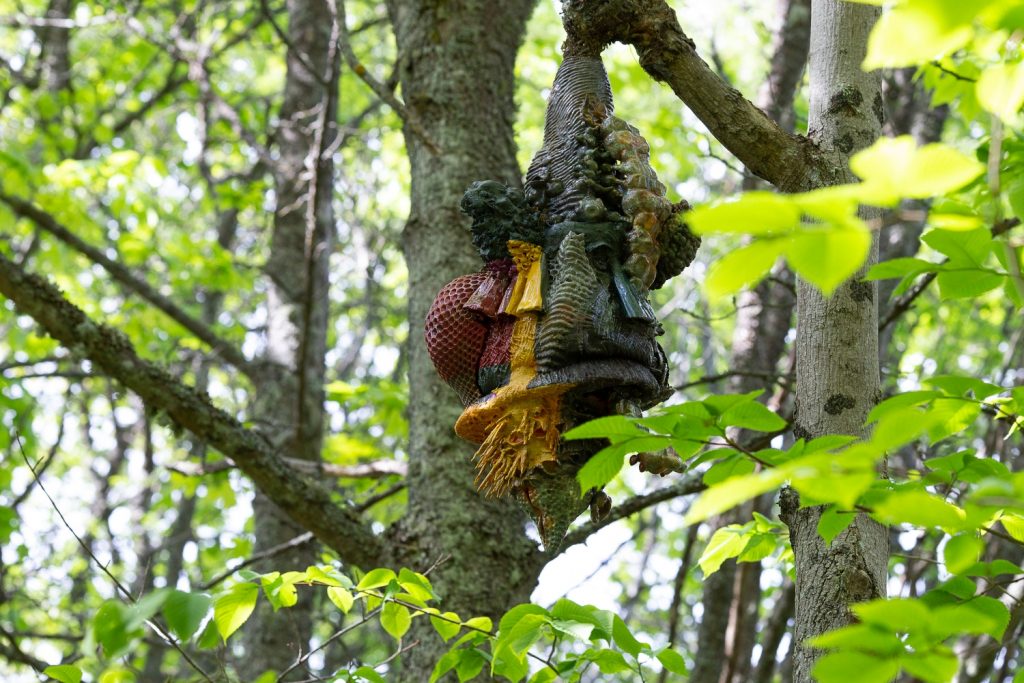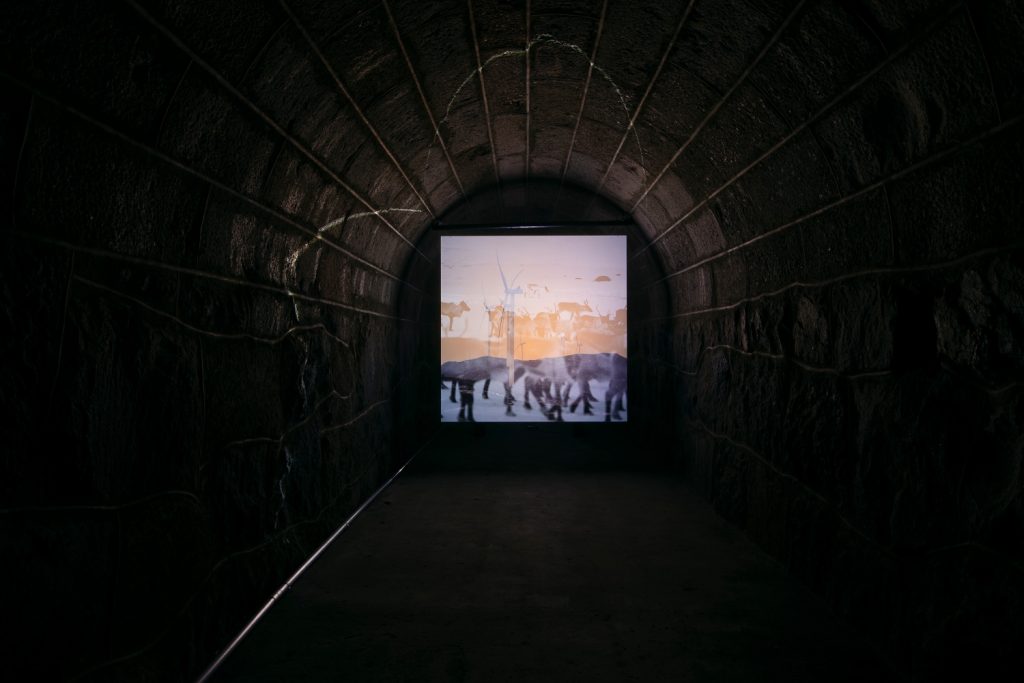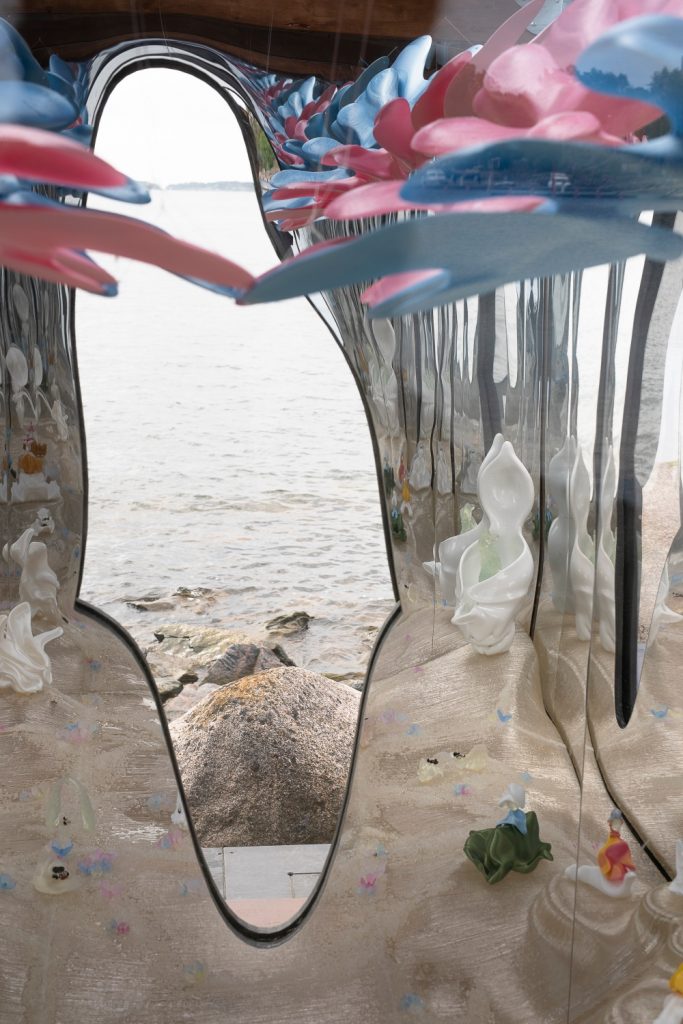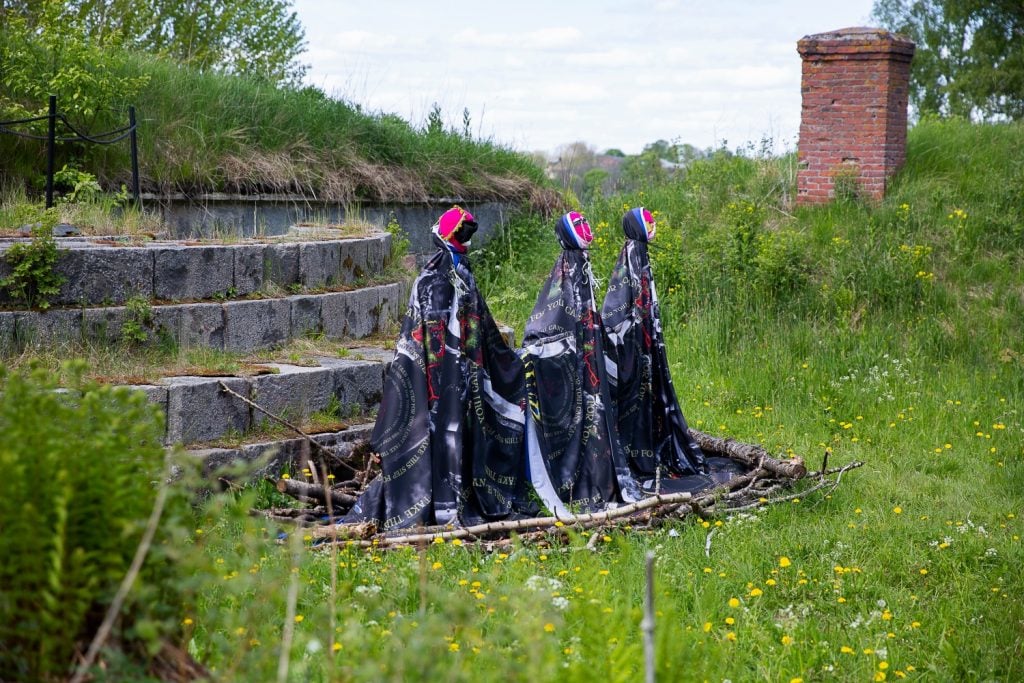Reviews
At the Sustainability-Focused Helsinki Biennial, Art, Tech, and the Environment Attempt to Coexist
Can art events like biennials ever be truly sustainable?

Can art events like biennials ever be truly sustainable?

Jo Lawson-Tancred

As the worldwide craze for biennials shows no signs of slowing down, for many the urgent issue of sustainability remains an awkward afterthought. Not so for the Helsinki Biennial in Finland, which was founded with the mission of pioneering a new model for ecologically-conscious arts programming. Returning this month for its second edition with 29 participating artists, it hopes to build on its past successes—and setbacks.
The exhibition returns to the archipelago island of Vallisaari but has also expanded to the mainland, with five works in the centrally located Helsinki Art Museum (HAM) and a few more scattered by the city’s main harbor. The title “New Directions May Emerge” this year, is borrowed from a quote by the American anthropologist Anna Tsing who has been hugely influential in the art world: “As contamination changes world-making projects, mutual worlds—and new directions—may emerge.”
For curator Joasia Krysa, who is best known for her work on Documenta 13 and the 9th Liverpool Biennial, the idea of contamination felt particularly pertinent. The Baltic Sea that washes up on Helsinki’s shores is among the most polluted waters in the world while the biodiverse haven of Vallisaari has been repeatedly taken over by military operations until it was abandoned in the 1990s.

Adrián Villar Rojas, from the series The End of Imagination (2023). Photo: © HAM/Helsinki Biennial/Viljami Annanolli.
The overgrown island is occupied once again, this time by 17 artworks and a steady stream of tourists arriving by ferry. The majority of the land is still closed off for conservation and the necessary facilities have been kept relatively minimal, with cafes, bathrooms, and a shop concentrated around two harbors. The site-specific exhibits are scattered along a pre-existing trail that loops around the island and they respond well to their environment, but do they justify our intrusion?
One installation by Helsinki-native Alma Heikkilä works hand-in-hand with nature by changing slowly over the course of the summer. Coadapted with (2023) contains of a sculpture that gains its color as rainwater mixes with natural plant dyes and drips over the plaster. The Materia Medica of Islands (2023) by Lotta Petronella, from the island of Ruissalo, reintroduces age-old ways of living with nature, including an apothecary for alternative herbal medicines and essences made with foraged local flora. Pieces from The End of Imagination (2023) series by Argentinian artist Adrián Villa Rojas blur the line between artificial and organic. Embedded in the landscape, they occasionally catch the eye of passersby, pulling our attention back to our surroundings.
Elsewhere, the dank gunpowder cellars left over from the island’s military past have been repurposed as eerie but intimate gallery spaces. Sealed off from the bright sun and visual clutter of the outdoors, they make the video installations within feel otherworldly and oddly transfixing. Among the highlights are Lithuanian artist Emilija Škarnulytė’s Hypoxia (2023), a semi-mythical meditation on the after-shock of oxygen depletion in the Baltic Sea, and the Sámi artist Matti Aikio’s Oikos (2023), a dreamy evocation based on childhood memories of reindeer herding.

Matti Aikio, Oikos (2023). Photo: © HAM/Helsinki Biennial/Kirsi Halkola.
Everyone wants to drink the kool-aid when it comes to sustainability pledges, but there are moments when the ambition feels far off. At the press preview, plastic bottles and disposable food trays are passed around at lunch and not one but two tote bags are foisted on me. Now they lie in a dejected pile of accidentally single-use bags in a corner of my room, forgotten until the next big clear out. These quibbles are a drop in the ocean compared to our flights to Helsinki and back. This year, the biennia opted not to offset flights, but to focus on reduction.
The Helsinki biennial can, however, boast a range of initiatives implemented to reduce its environmental impact, like opting for second-hand equipment where possible, reusing discarded materials and prudent waste management systems. All the sites where artworks have been installed are checked by a conservation biologist and a Finnish heritage agency, and the area is continually monitored for signs of erosion. For the time being, these imperfect attempts at reducing impact seem to be the best we can reasonably hope for.
Perhaps more radical, are the ways in which the island’s natural features and crude infrastructure have necessitated curatorial and artistic innovation. It proposes ways to adapt to the world, rather than relentlessly contort and control our surroundings until they become blandly ideal conditions. In doing so, we are rewarded by the irresistibly wild and beautiful landscape that envelops the works rather than having to face yet another white wall.

Keiken, Ángel Yōkai Atā (2023). Photo: © HAM/Helsinki Biennial/Kirsi Halkola.
Counterintuitively, the integration of emerging technologies is what has allowed many works to feel endlessly expansive without overwhelming the local ecosystem. On a land bridge to one of Vallisaari’s neighboring islands sits Ángel Yōkai Atā (2023) by the artist collective Keiken. The work was inspired by a visit to a magical spirit house in Thailand and, peering through the windows, visitors can glimpse a fantastical post-capitalist future for humanity that extends, via QR code, into an online interactive experience. The London-based artist Danielle Brathwaite-Shirley has also imagined an alternative realm, creating a new mythology for Vallisaari in Thou Shall Not Assume (2023), which invites participants to meet characters whose stories are further elaborated online.
In the case of Berlin-based Jenna Sutela’s Pond Brain (2023), however, the ecological-toll of technology feels harder to dismiss. The pleasingly peaceful work is housed within a dark, disused building and combines audio from an A.I. trained on the polyphonic sounds of nature in harmony with the deep reverberations of a water-filled bronze bowl that hums in response to human touch. “Obviously there’s an environmental impact to any sort of computing, especially large models, but it’s not a crazy impact in the scale of things,” Sutela told Artnet News. “I can’t give exact numbers but that would maybe be good. I should check it.”

Danielle Brathwaite-Shirley, Thou Shall Not Assume (2023). Photo: © HAM/Helsinki Biennial/Sonja Hyytiäinen.
It is hardly unusual for strident curatorial mission statements to put on a good show of highlighting the importance of nature or the urgency of the climate crisis, but anything more concrete is complicated to calculate and all too easy to ignore. For their part, the biennial’s organizers are serious about this less exciting side to environmental commitments. A report on the biennial’s inaugural edition considered its impact according to the categories of waste, material purchases, energy consumption, logistics, and mobility.
In 2021, waste volumes were measured as 37 tonnes of mixed waste, 7.9 tons of bio-waste and 2.5 tons of cardboard waste (these figures don’t include dismantling the event). Over the exhibition’s run, 235 MwH of energy was consumed from renewable sources, which apparently corresponds to the annual electricity consumption of approximately 16 Finns. Unsurprisingly, flights were the biggest contributor to the event’s carbon emissions. The total footprint corresponded to the annual emissions of about 100 Finns.
Have these experiences of quantifying impact offered any hope that a biennial on this scale could be sustainable? The biennial’s environmental coordinator Kiira Kivisaar thinks so. “These events will always have some sort of impact. Maybe it’s about balancing out the positive and negative impact, because otherwise we would all just sit at home,” said Kivisaari. “Being aware of the impact and finding ways to make it as small as possible is probably the best way to go.”
“Helsinki Biennial: New Directions May Emerge” runs through September 17, 2023.